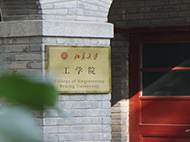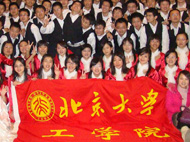报告一题目:Simulation of Self-Assemblies of Colloidal Particles on the Substrate Using a Lattice Boltzmann Pseudo-Solid Model
报告二题目:Study on Global Financial Crises with an Agent-Based Multi-Market Model
报告人:Prof. Yu Chen
时 间:4月5日(周四)下午2:00
地 点:力学楼434会议室
主持人:陈十一(经理)
报告一内容摘要:
A simulation study on the self-assemblies of colloidal particles partially immersed in a fluid layer on the substrate is carried out. To take the full solid-fluid interactions into account, a novel modeling approach for colloidal particles, called pseudo-solid model (PSM) is introduced in the framework of lattice Boltzmann (LB) model for multi-component fluids. A typical phenomenon in the fluid layer due to the lateral capillary forces, namely the attraction of two colloidal particles with the same affinity is numerically demonstrated, while the influences of particle distance and surface tension are investigated. Furthermore, the formation of self-assemblies of colloidal particles on the substrate is simulated under different interfacial tensions and coverage ratios. Results show good agreement with previous studies, which demonstrates the potential of LB-PSM to provide further insight into the self-organizing process of colloidal particles.
报告二内容摘要:
First, time evolution of the correlation coefficient of stock indices is proposed as a new stylized fact which can be used to characterize the global financial crises, in addition to the frequency of simultaneous crashes suggested in the previous study. The cause for simultaneous crashes had been addressed as the existence of a large number of global portfolio managers, through an agent-based simulation in the same study. However, it is found that the behavior of global managers cannot explain the abrupt rise of correlation in the course of crises, as well as the holding of positive correlation coefficients in the post-crisis phases. To solve these puzzles, risk costs of fund managers are re-defined to include exogenous factors. Meanwhile, memory effects of the managers are taken into account by employing a hysteresis model for the risk cognition. With these extensions to the base model, a possible mechanism for the distinctive change of correlation coefficient of financial indices among different markets, during the global financial crises, is suggested.









